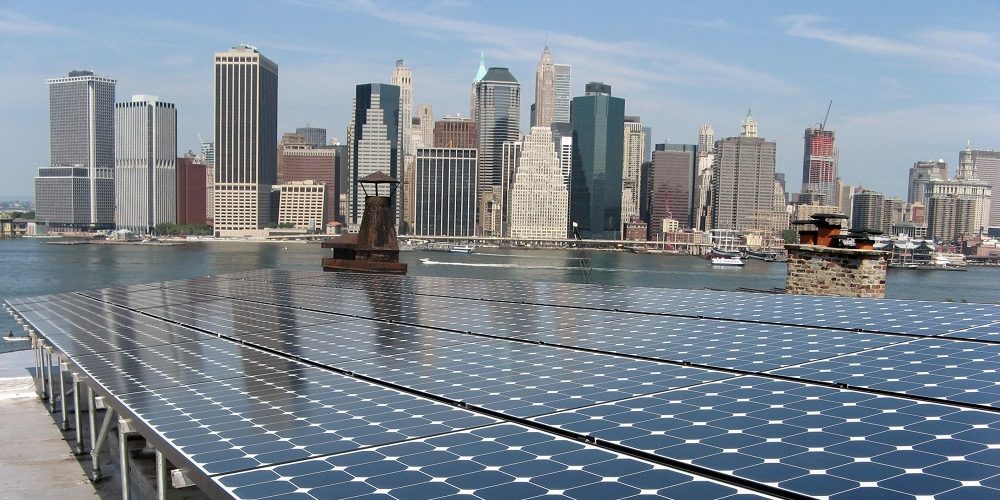New York City faces unique challenges to meet its renewable energy goals, being a densely populated area with a robust built environment. Despite the challenges, the city is going all-in on solar with numerous supportive policies, changes in regulations, and programs to expand solar access.
T.R. Ludwig, the chief executive officer of Brooklyn SolarWorks, an NYC-based installer, shared five ways that the city is driving growth in solar adoption.
1) City of Yes
The City of Yes program is a broad change to New York City’s zoning regulations that seeks to modernize the city and make it more equitable and environmentally conscious. It has three major facets focused on housing opportunity, economic opportunity, and carbon neutrality.
 The carbon neutrality section of the City of Yes program will remove existing zoning obstacles that severely limit how much space on a rooftop can be covered by solar panels, also known as setback requirements. It will also make it easier to install energy storage by loosening some of the strict zoning laws related to battery placement.
The carbon neutrality section of the City of Yes program will remove existing zoning obstacles that severely limit how much space on a rooftop can be covered by solar panels, also known as setback requirements. It will also make it easier to install energy storage by loosening some of the strict zoning laws related to battery placement.
Among other changes, City of Yes is expected to open solar opportunities for more than 8,500 acres of parking lots across New York City. Ludwig said the changes present opportunities for rooftop solar development on more than 50,000 buildings and more than 1 million homes in NYC.
2) Property tax abatement
New York City has increased its property tax abatement from 20% to 30%. It covers 30% of solar panel installation costs by reducing property tax bills from the New York City Department of Finance incrementally for 4 consecutive years.
This is a tax abatement, which lowers the amount of property taxes owed by applying a credit.
3) Local Law 97
Local Law 97, taking effect this year, limits emissions for buildings greater than 25,000 square feet, requiring a reduction of emissions by 40% by 2030 and 80% by 2050. Buildings not in compliance are required to pay penalties.
This law dovetails with NYC Local Laws 92 and 94, also known as the Green Roof Law, which requires that all new roof construction must include either a green roof, a solar array, or a combination of both.
4) Low income communities bonus credit
The Inflation Reduction Act provides at least 30% and up to 70% of a solar project’s installed system cost in the form of a tax credit. The Low-Income Communities Bonus Credit program allows for up to 1.8 GW of eligible solar or wind capacity to be allocated credits each year. Read more about the program here.
5) Job creation
Ludwig said economic opportunity in the form of job creation will expand dramatically.
“The rising demand is being felt by the city’s developers and installers with the city’s comptroller predicting the creation of 13,000 clean-energy jobs over the next 8 years,” said Ludwig.
T.R. Ludwig is the CEO and co-founder of both Brooklyn SolarWorks and Brooklyn Solar Canopy Co. and serves as treasurer for New York Solar Energy Industries Association (NYSEIA).
This content is protected by copyright and may not be reused. If you want to cooperate with us and would like to reuse some of our content, please contact: editors@pv-magazine.com.









By submitting this form you agree to pv magazine using your data for the purposes of publishing your comment.
Your personal data will only be disclosed or otherwise transmitted to third parties for the purposes of spam filtering or if this is necessary for technical maintenance of the website. Any other transfer to third parties will not take place unless this is justified on the basis of applicable data protection regulations or if pv magazine is legally obliged to do so.
You may revoke this consent at any time with effect for the future, in which case your personal data will be deleted immediately. Otherwise, your data will be deleted if pv magazine has processed your request or the purpose of data storage is fulfilled.
Further information on data privacy can be found in our Data Protection Policy.